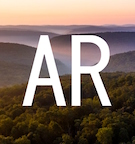
|
||||||||||||||||||
|
|
||||||||||||||||||
|
| ||||||||||||||||||
  








  









| ||||||||||||||||||
BFRO's Pacific Northwest Newsletter
State-of-the-Art Video Research
by Thom Powell
|
The BFRO's Wireless Wilderness Project has an excellent chance of yielding photographic documentation in the Pacific Northwest. In a nutshell, the idea involves outdoor, wireless webcams. Imagine, if you will, viewing live images on a home computer of a sasquatch foraging in the woods. The technology currently exists to accomplish this, and we know a few good locations to apply the the technology. We simply need a sponsor to provide the equipment. The equipment package should consist of weatherproof video cameras, transmitters (with repeaters, if necessary), and their weatherproofed power supplies. Motion-detector-triggered-still-camera systems (aka. camera traps)
such the "Buckshot," "Camtrakker," or "Trailmaster"
are a much less expensive method for an individual to monitor a
specific spot, but those systems require periodic maintenance, and
no one can the photos until someone goes out to replace the roll
of film. The wireless webcam approach allows the public to "tune in" to a remote wilderness location at any time and listen or observe things otherwise unheard or unseen by humans. One configuration using currently available off-the-shelf equipment
consists of a digital recorder with capacity for up to 16 cameras
recording at 1 frame every 1.3 seconds for up to 20 days. Current
digital technology allows the cameras to record only when motion
is detected. This allows for increased storage capacity and quicker
retrival of any event.
Each camera unit would be mounted in a weatherproof housing. The units' infrared technology allows for extremly clear black and white video from as far away as 200 meters. Using wireless transmitters a video signal can be transmitted back to the digital recorder from as far away as 2 miles (line of site). Proximity to a rural homestead is the ideal situation. This affords a measure of security for the equipment as well 110 AC power and a phone line. This may not be necessary if the system includes cameras with cell phone linked transmitters, and the various components are powered by 12-volt deep-cycle batteries with solar trickle chargers. The latter configuration could theoretically remain in the field and operational forever, with only rare maintenance visits. There are lots of ideas about how to lure a sasquatch in front of a remote camera. Some may actually work, but the only way to test those ideas is to have the equipment array installed and working in promising location for a long period of time. That will require a patient and progressive sponsor. Sponsors can expect the commercial value of authentic footage to easily cover the costs of this project.
Here is some equipment that could be used for a project like this,
or some variation of it: See
Spooktech and at
Extreme CCTV
|